Mushrooms are more than just pizza toppings. Rich in nutrients and available in many varieties, they’re a versatile addition to healthy meals. While all mushrooms offer some health benefits, certain varieties are especially great for your nutrition. This guide covers ten mushrooms that are good for you, their benefits, and simple ways to include more of them in your diet.
Top 10 Mushrooms That Are Good for You
1. Shiitake
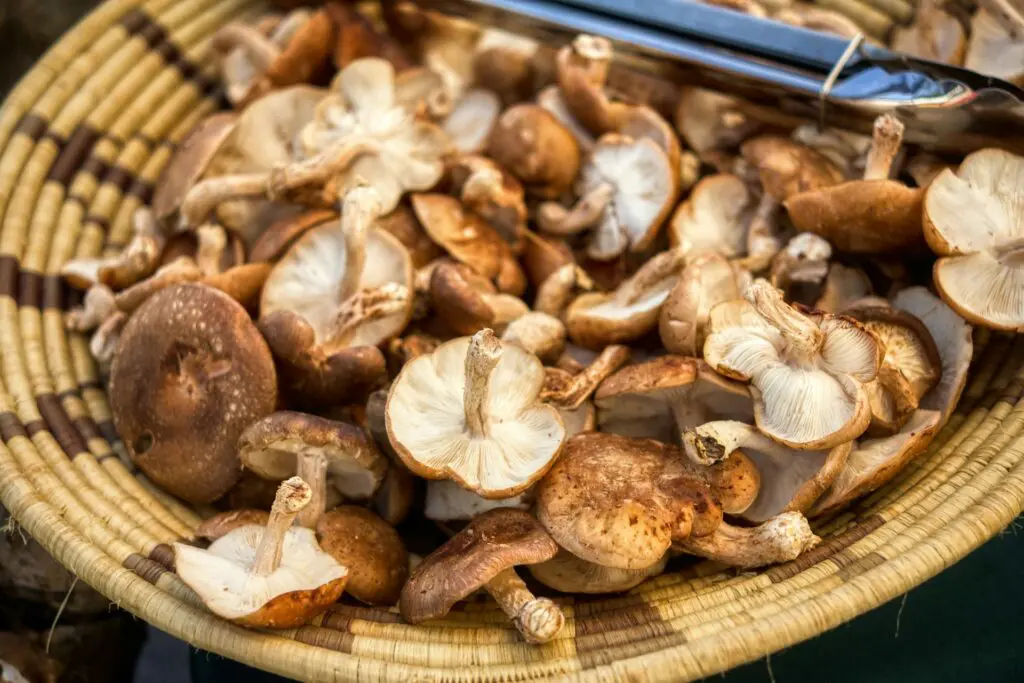
Shiitake mushrooms bring rich flavor and solid nutrition to your plate. Their meaty texture makes them perfect for soups and stir-fries. These mushrooms support heart health through their fiber content and help maintain healthy blood pressure.
Benefits:
- High in B vitamins
- Supports heart health
- Boosts immune function
- Adds rich flavor to dishes
2. Lion’s Mane
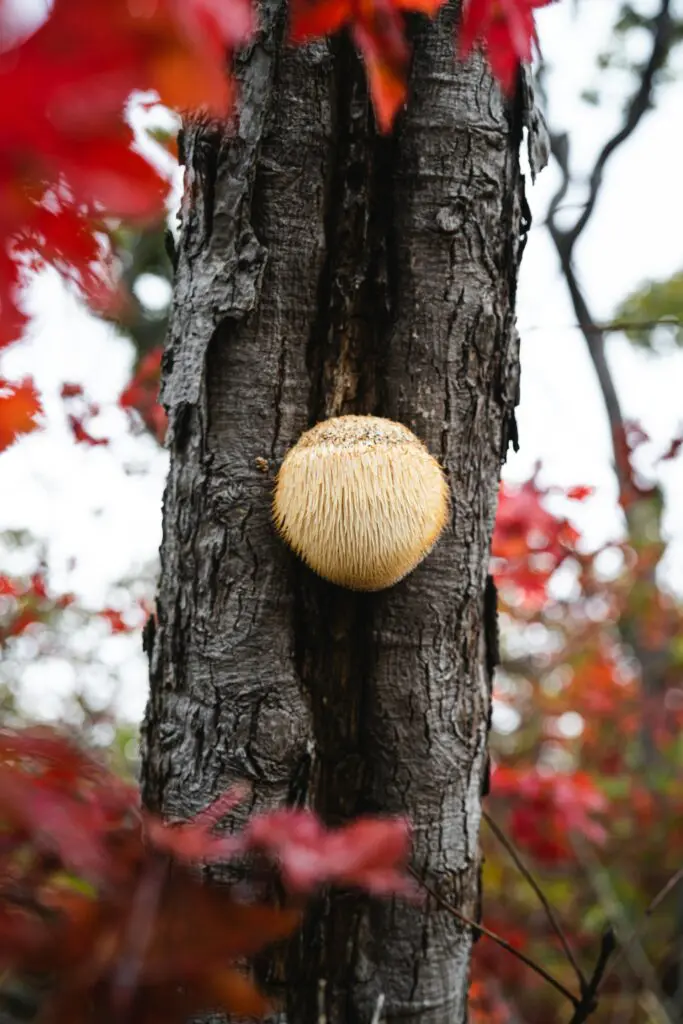
Known for its shaggy appearance, lion’s mane has gained popularity for its unique benefits. Research shows it supports brain health and may help improve focus. Its texture makes it a great seafood substitute.
Benefits:
- Supports brain health
- Rich in protein
- Has a seafood-like texture
- Works well in stir-fries and grain bowls
- Popular in easy-to-consume capsule form
3. Maitake (Hen of the Woods)
Maitake mushrooms help maintain healthy blood sugar levels. Their feathery clusters have a robust flavor that works well in many dishes. They’re especially good when roasted, which brings out their rich taste.
Benefits:
- Helps manage blood sugar
- Rich in antioxidants
- Versatile in cooking
- Natural source of vitamin D
4. Oyster Mushrooms
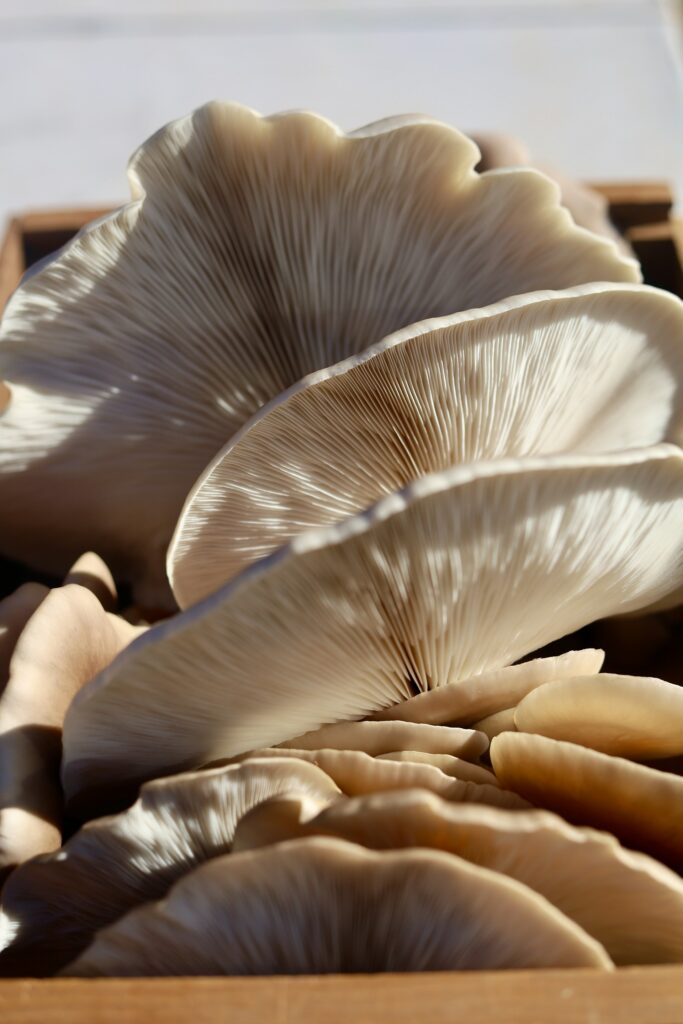
These fan-shaped mushrooms are among the easiest to cook. They have a mild, sweet flavor and work well as a meat substitute. Oyster mushrooms are also one of the best mushroom sources of iron.
Benefits:
- High in iron
- Easy to prepare
- Mild flavor
- Works well in pasta dishes
5. Reishi

While not typically eaten whole, reishi mushrooms are often used in teas and supplements. They’re known for supporting sleep quality and helping the body manage stress.
Benefits:
- Supports restful sleep
- Helps with stress
- Can be made into tea
- Available as supplements
6. King Trumpet
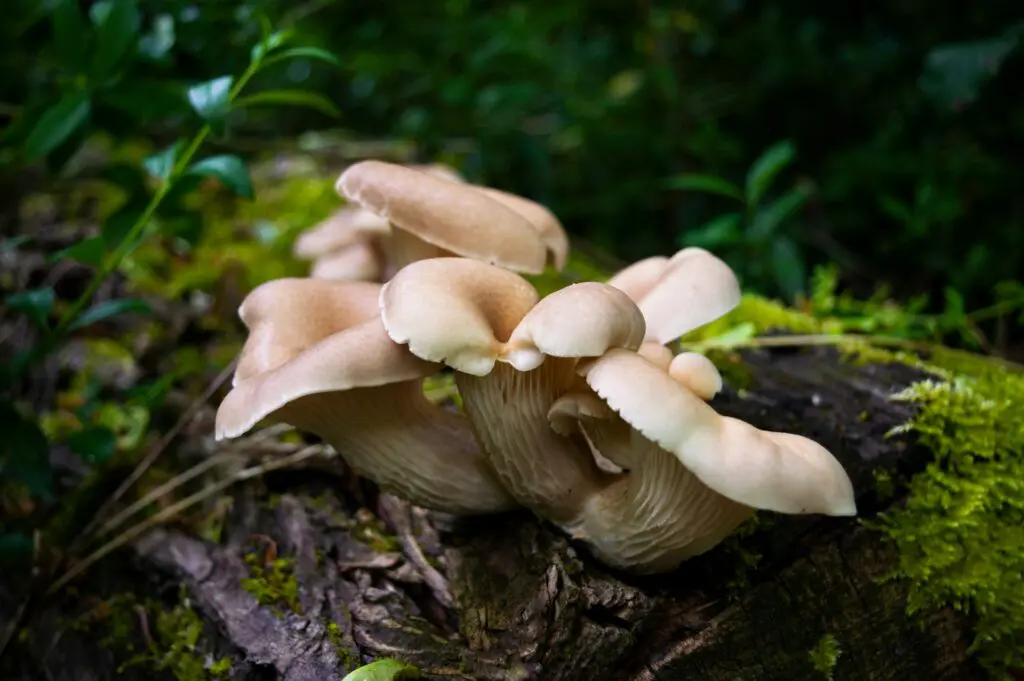
The largest of the oyster mushroom family, king trumpets have a thick, meaty stem. Their firm texture makes them perfect for grilling or slicing into “scallops.” They can also be purchased in powder form as an umami-flavored spice for plant-based diets.
Benefits:
- Hearty, meaty texture
- Rich in potassium
- Great for grilling
- Works well as a meat substitute
7. Enoki
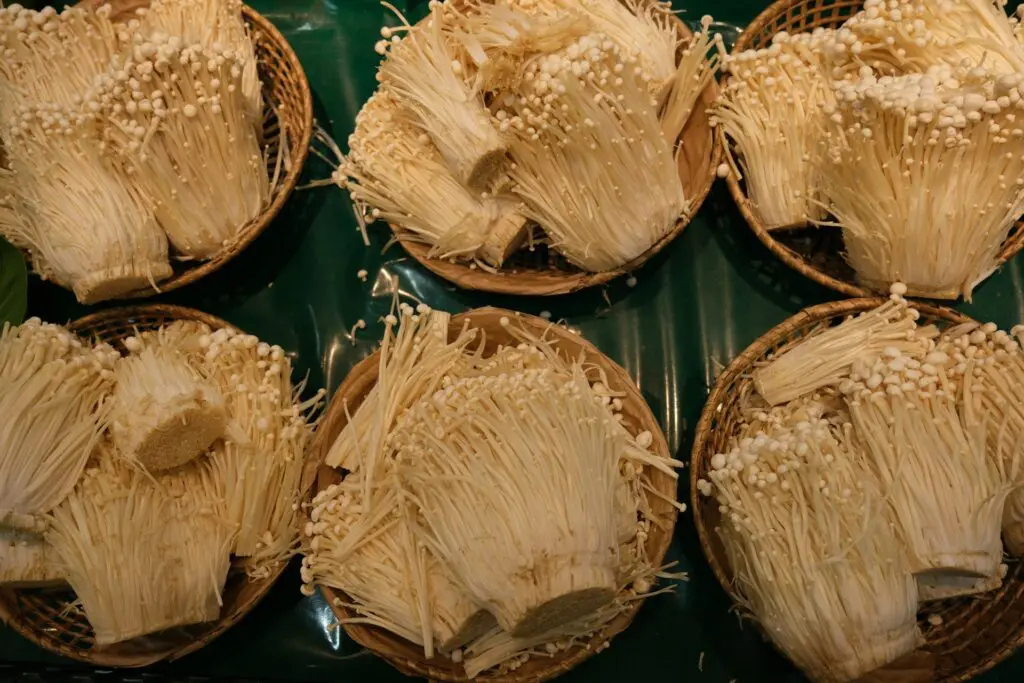
These long, thin mushrooms are common in Asian cooking. They have a crisp texture when raw and add a nice crunch to salads. When cooked, they’re perfect in soups and noodle dishes.
Benefits:
- Low in calories
- High in fiber
- Great in soups
- Adds texture to salads
8. Portobello
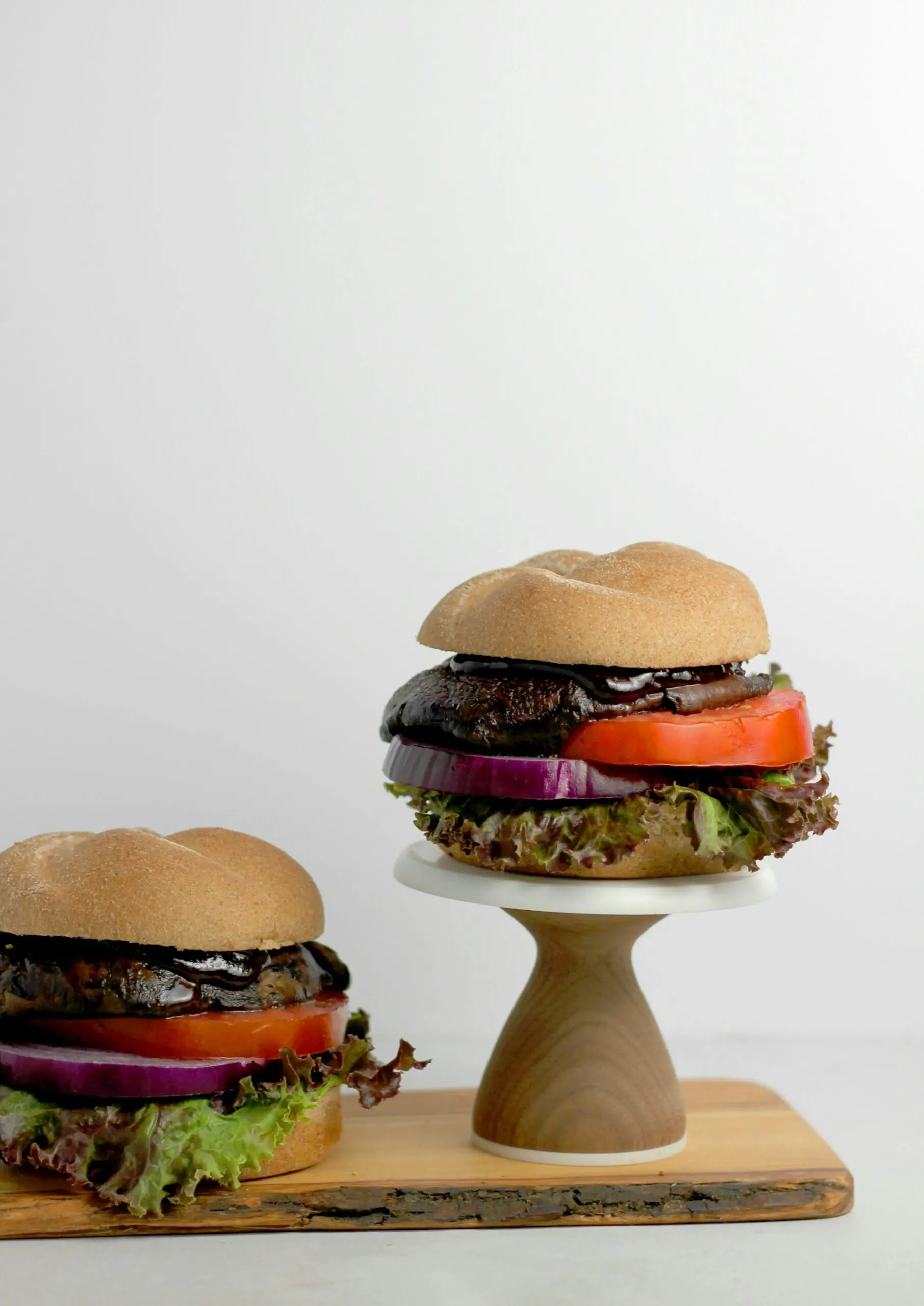
These large, meaty mushrooms are perfect for grilling. They make excellent burger substitutes and can be stuffed with various fillings. Portobellos are mature cremini mushrooms, which explains their rich flavor.
Benefits:
- Rich in potassium
- Perfect for grilling
- Substantial meat alternative
- Good source of B vitamins
9. Crimini (Baby Bella)
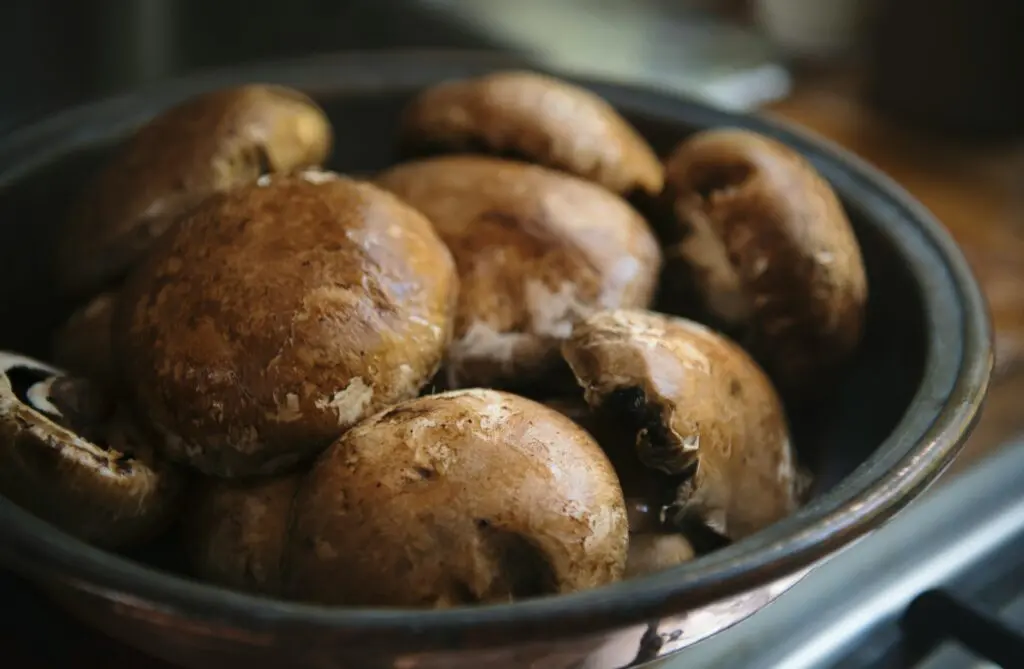
These brown mushrooms are actually young portobellos. They have a richer flavor than white button mushrooms and work well in almost any dish.
Benefits:
- Rich in selenium, a powerful antioxidant
- Versatile in cooking
- More flavorful than white mushrooms
- Affordable and widely available
10. White Button
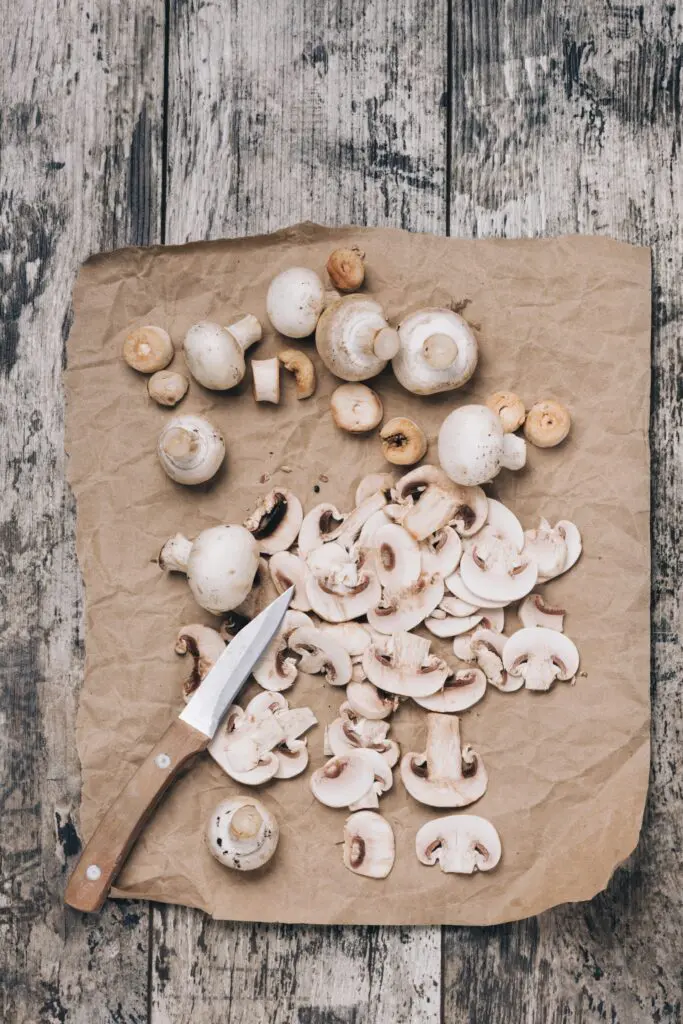
The most common mushroom variety, white buttons are mild in flavor and incredibly versatile. They’re perfect for beginners and work well both raw and cooked.
Benefits:
- Mild flavor
- Easy to find
- Budget-friendly
- Very versatile
How to Include More Mushrooms in Your Diet
Adding mushrooms to your meals is easier than you might think:
- Start with familiar varieties like white button or cremini
- Add sliced mushrooms to omelets or scrambled eggs
- Toss raw mushrooms into salads
- Use portobellos as burger patties
- Add mushrooms to pasta sauces and stir-fries
- Try mushroom coffee alternatives with lion’s mane or cordyceps
- Make soothing mushroom tea with reishi or chaga
Storing and Handling Mushrooms
Choosing Your Mushrooms
When buying fresh mushrooms, look for ones that are:
- Firm and dry to the touch
- No dark spots or slime
- Not wrinkled or shriveled
- Clean and unblemished
When buying dried mushrooms, look for:
- Pieces that are whole, not crumbled
- Rich, even color without light spots
- No signs of moisture or mold
- Clear packaging with visible contents
- Strong, pleasant mushroom smell (avoid any musty odors)
Storage and Preparation
- Store in paper bags in the fridge (avoid plastic wrap, which traps moisture)
- Use within a week for best quality
- Clean just before using with a damp paper towel or mushroom brush
- Avoid soaking in water, which makes them soggy
- Cut away any bruised areas
- For most varieties, cook thoroughly to get the best nutrition and ensure food safety
Frequently Asked Questions
Is it safe to buy mushrooms online?
Yes, it’s safe to buy mushrooms from established retailers and specialty mushroom companies. Culinary mushrooms sold commercially must meet food safety standards. Stick to reputable sellers who clearly state their sourcing and quality control processes.
How can I be sure I’m not buying poisonous mushrooms?
Commercial mushrooms sold in grocery stores and by legitimate retailers are completely safe. Poisonous mushrooms are a concern only when foraging wild mushrooms. The varieties in this guide are widely cultivated and sold commercially, making them safe to purchase and eat.
Do I need to wash mushrooms before eating them?
Contrary to popular belief, you can quickly rinse mushrooms with water. Just don’t soak them, as they’ll absorb too much water. Alternatively, wipe them clean with a damp paper towel. The key is to clean them right before use, not during storage.
Which mushroom is best for beginners?
White button mushrooms are perfect for beginners. They’re mild in flavor, widely available, affordable, and versatile in cooking. Once you’re comfortable with these, try cremini mushrooms, which are similar but have a slightly richer taste.
Are raw or cooked mushrooms more nutritious?
Most mushrooms are more nutritious when cooked. Cooking breaks down the tough cell walls, making nutrients more available for your body to absorb. It also deactivates certain compounds that can interfere with nutrient absorption. However, some mushrooms like button and crimini can be eaten raw.
Getting Started with Healthy Mushrooms
Many people avoid mushrooms because they’re unfamiliar with them. Start with one or two well-known varieties and gradually explore new types as you get comfortable. Each variety offers unique benefits and can add new flavors and textures to your meals.
Remember, while these are mushrooms that are good for you and are healthy additions to most diets, always try new varieties in small amounts first. If you have food allergies or medical conditions, check with your healthcare provider before adding new foods to your diet.
Share Your Experience
We’d love to hear about your mushroom journey in the comments below:
- Which mushroom variety surprised you the most with its taste or benefits?
- What’s your favorite way to prepare mushrooms?
- Have you tried any mushroom beverages? What did you think?
More from Bananomad
- Struggling with anxiety? Bananomad shares reader-tested books that provide practical tools for managing anxiety and finding calm.
- Learn about unusual signs of stress. Help manage your mental health better and live a more carefree lifestyle.
- Looking for the healthiest milk? Our guide compares several alternatives and dairy milk, with nutritional benefits and best uses for each.


Leave a Reply